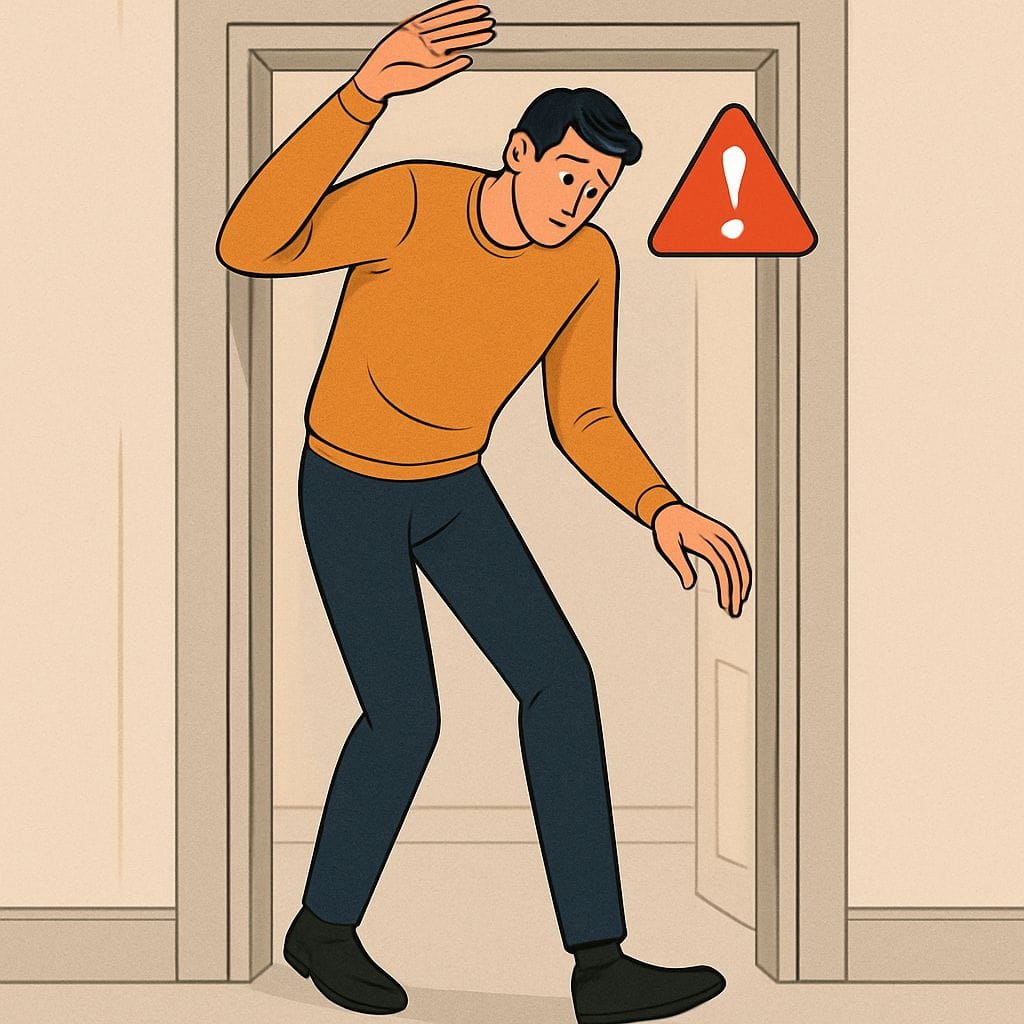Door Frame Head Bumps: How Tall People Can Protect Themselves

As a tall person, you’ve likely had your fair share of head bumps from door frames. Whether it’s in your own home, at work, or even when visiting friends, door frame injury tall people is a common issue that can be frustrating and painful. No one likes to be constantly reminded of their height, especially when it leads to discomfort.
In this article, we’ll explore how tall people can protect themselves from head bumps, why this issue happens, and tips on how to avoid head bumps at home and in public spaces. Read on to learn more about simple strategies to prevent those painful moments.
Why Tall People Hit Their Heads on Door Frames
For many tall individuals, the average door height is simply not designed for them. The standard door frame height is typically around 6 feet 8 inches (203 cm), but this is often just a few inches shy of accommodating tall people, especially those who are over 6 feet 4 inches tall.
When walking through narrow doorways, tall individuals may not have enough clearance to pass through without ducking slightly. This can result in head bumps or head injuries, which can be not only painful but also embarrassing. In addition to doorways, low ceilings and overhead fixtures contribute to these accidents.
How to Avoid Head Bumps at Home
1. Adjust the Height of Your Door Frames
If you’re planning a home renovation or even just considering minor home adjustments, one of the most effective solutions is to raise your door frames. It might not be a simple DIY project, but expanding door heights and using higher doorways (around 7 feet or 8 feet tall) will give you more headroom and reduce the risk of hitting your head.
This might be a more expensive option for those who rent, but it’s definitely something to consider for homeowners who want to make their living space more comfortable.
2. Install Raised Thresholds
Another solution is to install raised thresholds around doors and entryways. These raised thresholds give you more time to react as you approach a doorway, providing a subtle visual cue to help you avoid hitting your head. While not a full solution, it can act as a reminder to be cautious around low entryways.
3. Use a Ceiling Bumper or Padding
For particularly low doorways or hallways, you can use ceiling bumpers or padding to soften the impact if you do hit your head. These can be placed on top of door frames and provide extra protection. You can even find adhesive foam bumpers that can be easily installed in a few minutes.
4. Get Creative with Décor
If you’re trying to avoid hitting your head but don’t want to compromise on style, consider using decorative hanging elements like beaded curtains or string lights that hang slightly lower than the doorframe. This can act as a visual cue to make you aware of the lower space, allowing you to duck before entering the door.
How to Avoid Head Bumps in Public Spaces
1. Be Mindful of Low Doorways in Public Spaces
When out in public, such as in restaurants, hotels, or older buildings, it’s important to remain mindful of low doorways. Many historic buildings and older homes have been constructed with lower ceilings and doorways, which can be dangerous for taller individuals.
In these situations, it’s best to slow down and be extra cautious. Taking your time as you approach doorways can prevent accidents and help you avoid painful bumps.
2. Use Your Height to Your Advantage
Tall people tend to be more aware of their surroundings because they can see over most crowds and obstacles. This means you have a natural advantage when it comes to noticing door frames and low ceilings. Keep an eye on the surroundings as you approach any enclosed space, and be proactive in ducking when necessary.
3. Opt for High Ceilings in Hotels and Airbnbs
If you’re traveling or booking accommodations, consider places that have high ceilings. Hotels and Airbnbs with higher doorways and ceiling heights can make a big difference in reducing your chances of a painful head bump. When making travel decisions, search for tall-friendly accommodations that will better suit your needs.
Tips for Avoiding Door Frame Injuries
1. Avoid Walking Too Fast
Sometimes, the issue isn’t just about the height of the doorframe but also about how quickly you move through doorways. When you rush through narrow spaces, it becomes harder to react in time. Take it slow when walking through low doors to give yourself more time to adjust.
2. Raise Your Awareness of Low Doorways
If you live in an older home, you probably already know where the low doorways are. However, if you’re in unfamiliar spaces, like a friend’s house or a new office, take note of any low-clearance areas and avoid them as much as possible.
3. Use Protective Gear (for Extreme Cases)
In extreme situations, like when working in a place with low doorways or in environments with overhead obstacles, consider wearing protective headgear or safety helmets. This may sound extreme, but if you have a high risk of frequent head injuries, it’s worth considering for extra protection.
Key Takeaways
Head bumps are a common problem for tall people due to low door frames and low ceilings.
Raising doorways and installing ceiling bumpers can be great solutions at home to avoid injuries.
Be extra cautious and mindful when walking through low-clearance doorways in public.
Consider accommodations with higher ceilings when traveling to reduce the risk of head injuries.
FAQ
Q1: Can I make my doorways taller if I rent?
A: While major renovations might not be possible in a rental, you can install raised thresholds or decorative cues that can alert you to low doorframes.
Q2: How can I avoid hitting my head in a public space?
A: Slow down as you approach doorways, use your height to spot low ceilings, and be extra cautious in older buildings with smaller doorways.
Q3: What are ceiling bumpers?
A: Ceiling bumpers are foam or soft padding that you can attach to the top of door frames to prevent head injuries when you hit the doorframe.






